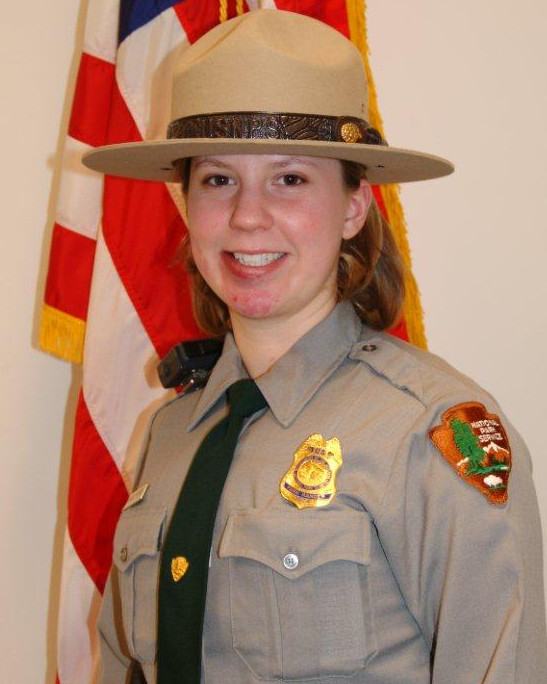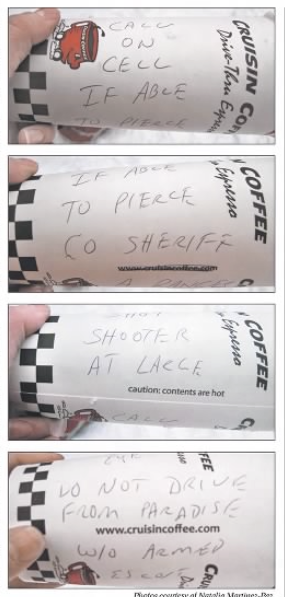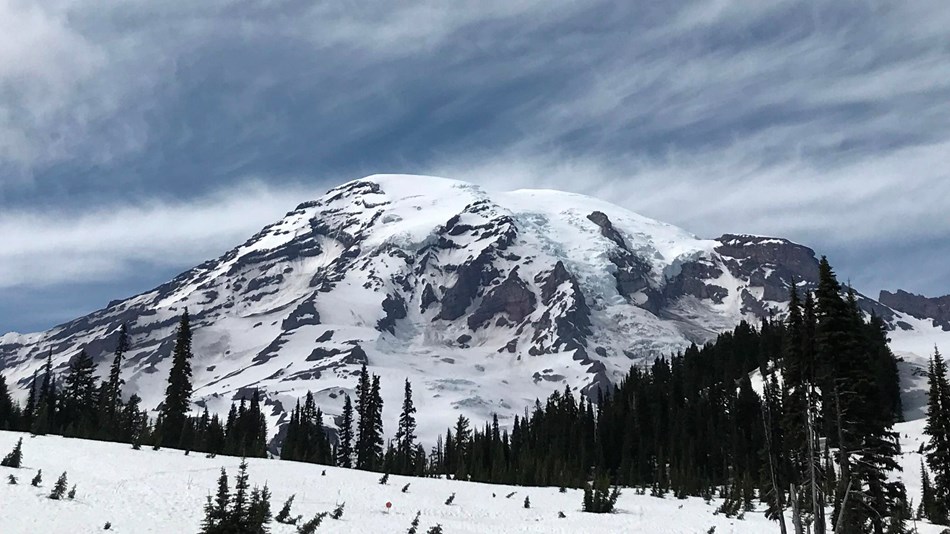On New Year’s Day in 2012 park ranger Margaret Anderson encountered a violent man on an icy roadway in Mount Rainier National Park. The aftermath of their confrontation led authorities on a park-wide manhunt that sent questions flying as to how a predator carrying so much firepower made it through the gates.

Margaret Anderson

Benjamin Colton Barnes

Benjamin Colton Barnes Mug Shot

Coffee Cup Warning Messages

Mount Ranier National Park

Mount Rainier National Park Map
Episode Source Material
- National Park Service: Park Ranger Fatally Shot at Mount Rainier
- National Park Service: Manhunt Continues for Man who Killed Ranger on Mount Rainier
- Seattle PI: Park ranger fatally shot at Mount Rainier National Park
- The Oregonian: Police have ‘strong person of interest’ in Mount Rainier killing of park ranger, by The Oregonian staff and wire reports
- KOMO News: 4 shot during house party in Skyway, by KOMO staff
- The Oregonian: Police have ‘strong person of interest’ in Mount Rainier killing of park ranger, by The Oregonian staff and wire reports
- The Oregonian (Portland, OR): Gunman remains at large on Mount Rainier, by Associated Press
- ABC News: Person of Interest Identified in Park Ranger Killing, by Dean Schabner
- The News Tribune (Tacoma, WA): Transcript from Mount Rainier National Park shooting press conference, by Craig Hill
- The Oregonian (Portland, OR): Mount Rainier shooting suspect may be dead; body found in deep snow, by The Oregonian Staff and wire reports
- The Oregonian (Portland, OR): Mount Rainier shooting suspect Benjamin Colton Barnes confirmed dead, by The Oregonian staff and wire reports
- CNN: Body identified as man sought in Mount Rainier park ranger shooting, by CNN Wire Staff
- The News Tribune: Suspect in ranger slaying found dead on Mount Rainier, by Craig Hill and Debbie Cafazzo
- The News Tribune: Anderson ‘saved my life’, Tacoman says, by C.R. Roberts
- Seattle Times: Suspect’s downward spiral ended with killing at Rainier, by Craig Welch, Steve Miletich, and Mike Carter
- Reuters: Mount Rainier gunman died of drowning, hypothermia: officials, by Laura L. Myers
- The Olympian (Olympia, WA): Rainier to remain closed until Saturday, by Craig Hill and Stacey Mulick
- The News Tribune (Tacoma, WA): Coffee cups warned of danger, by Craig Hill
- The News Tribune (Tacoma, WA): Slain ranger’s family grateful for support, by Craig Hill
- The Oregonian: Mount Rainier National Park reopens after fatal ranger shooting, by Associated Press
- The News Tribune (Tacoma, WA): Crisis met with strong response, by Sean Robinson, Stacey Mulick, Craig Hill, and Stacia Glenn
- The Oregonian (Portland, OR): Mount Rainier ranger’s memorial service draws thousands, by Associated Press
- The Olympian (Olympia, WA): Ranger’s death topic of review, by Craig Hill
- KATU 2 (Portland, OR): New details emerge about Ranger Anderson’s sacrifice, by Michelle Esteban
- The Oregonian (Portland, OR): Slain Rainier ranger Margaret Anderson honored by Washington Senate, by Associated Press
- The News Tribune (Tacoma, WA): Review Board Update
- The News Tribune (Tacoma, WA): Ranger, 5 deputies honored for valor
- The News Tribune (Tacoma, WA): Ceremony to honor fallen officers
- The News Tribune (Tacoma, WA): Slain ranger’s husband to leave park, by Jeff Mayor
- Outside Magazine: The Devil on Paradise Road, by Bruce Barcott
- National Parks Traveler: NPS Says It Could Not Have Prevented Murder Of Mount Rainier National Park Ranger, by NPT Staff
- The Olympian (Olympia, WA): Post office might bear name of Mount Rainier ranger, by Jeffrey P. Mayor
- The Olympian (Olympia, WA): Rainier to remember ranger Anderson today, by Craig Hill
- The News Tribune (Tacoma, WA): Moment of silence will mark ranger death
- The News Tribune (Tacoma, WA): Final report on Rainier ranger’s death takes 2 years, by Craig Hill
